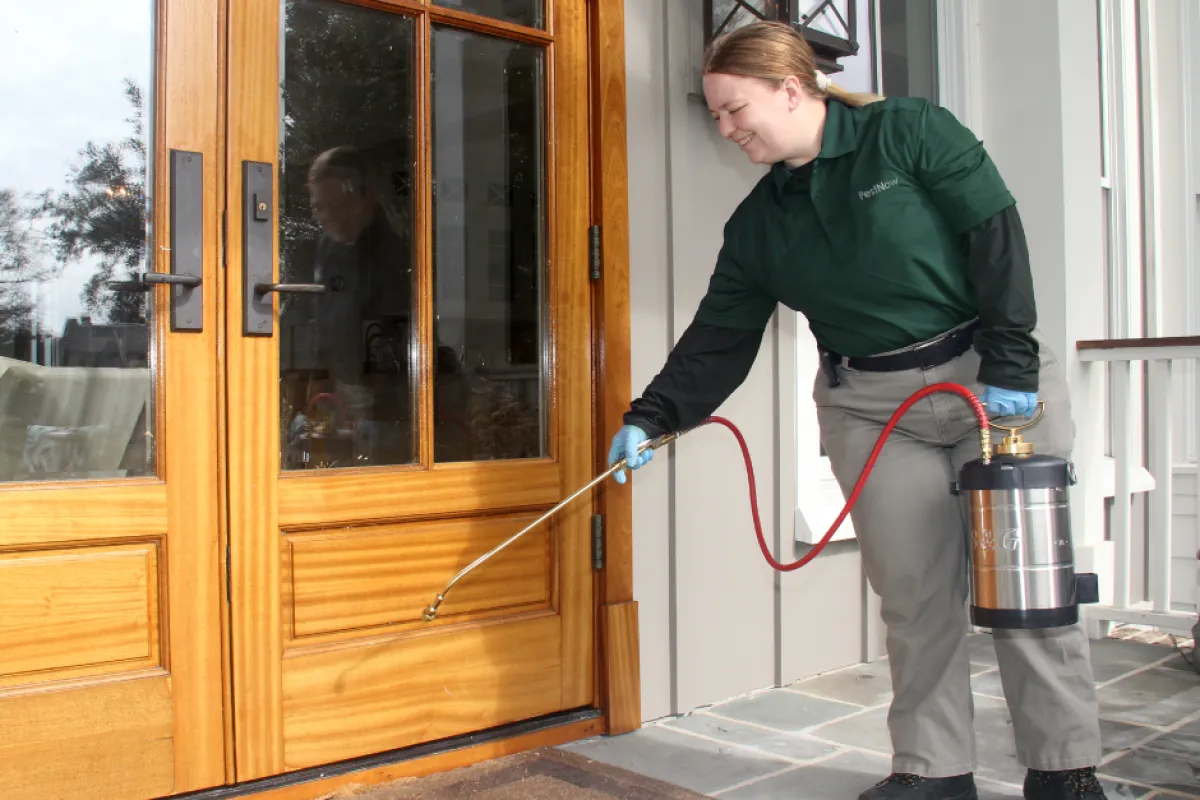A1 Charlotte Pest Control Companies - Your Neighborhood Pest Experts
A1 Charlotte Pest Control Companies - Your Neighborhood Pest Experts
Blog Article
Bed Pest Treatment Failure: Comparing Chemical Vs. Non-Chemical Solutions
In the world of parasite control, particularly when managing the relentless problem of bed pests, the selection in between chemical and non-chemical treatment remedies can be an essential one. Both strategies supply unique advantages and downsides, influencing factors such as efficiency, safety and security factors to consider, and total cost. By checking out the nuanced information of each technique, a clearer understanding of which path to pursue in addressing a bed bug problem can be obtained.
Performance of Chemical Therapies
Chemical treatments for bed insect invasions have been widely identified for their fast and potent effectiveness in eliminating these parasites. When thinking about the effectiveness of chemical therapies, it is essential to comprehend that they can offer a thorough and fast service to a bed pest problem. Professional pest control operators typically rely upon pesticides to target bed pests at numerous phases of their life cycle, consisting of grownups, nymphs, and eggs. These chemicals usually work by disrupting the bed bugs' anxious system, causing paralysis and ultimate death.
Additionally, chemical therapies have the advantage of using residual impacts, implying that they can remain to remove bed bugs even after the initial application. This recurring activity is especially valuable in combating any possible re-infestations. Furthermore, the fast activity of chemical treatments can bring relief to people dealing with extreme bed pest infestations, permitting them to reclaim control of their home promptly.
Safety Worry About Chemical Solutions
When utilizing chemical solutions for bed bug treatment is making sure the security of occupants and the setting,One critical aspect that calls for mindful consideration. While chemical therapies can be effective in getting rid of bed bugs, they might position threats if not dealt with properly. One of the key safety and security worries with chemical solutions is the possible damage they can cause to human health. Exposure to specific chemicals made use of in bed insect therapies can bring about respiratory problems, skin irritability, or other unfavorable responses, specifically in people with pre-existing problems or level of sensitivities. Additionally, improper application or dosage of chemical pesticides can result in poisonous residues lingering in the cured area, posing long-term health dangers to owners.
In addition, the ecological impact of chemical services is another significant factor to consider. Some chemicals used in bed pest therapies might be dangerous to advantageous insects, wild animals, and communities if they leach into the dirt or water systems. It is crucial to utilize chemical treatments carefully, adhering to security guidelines, and thinking about less hazardous choices to mitigate these dangers and ensure the safe and reliable administration of bed insect problems.
Advantages of Non-Chemical Methods
Taking into consideration the prospective security issues and ecological influence related to chemical options for bed pest treatment, checking out non-chemical methods offers an appealing alternative with a number of distinct advantages. Non-chemical techniques offer a more secure choice for houses, specifically those with people, animals, or children sensitive to extreme chemicals. These approaches remove the threats of exposure to toxic materials, decreasing the possibility for damaging wellness impacts. Furthermore, non-chemical therapies are eco friendly, as they do not add to air or water air pollution, making them a sustainable selection for bug control.
Furthermore, non-chemical remedies can be effective in targeting bed pests, including hard-to-reach locations where chemical treatments may not penetrate - A1 charlotte bed bug exterminator. Methods such as warm therapy, vacuuming, steam cleansing, and bed mattress encasements offer detailed obliteration without continue reading this the use of dangerous chemicals.
Limitations of Non-Chemical Treatments

In addition, non-chemical therapies frequently need numerous applications to attain effective obliteration. This can be time-consuming and may find not always ensure full removal of all bed insects and their eggs, specifically in covert or hard-to-reach places.
Additionally, the success of non-chemical therapies greatly relies upon proper application and thoroughness, which can be testing for individuals without expert expertise. Inadequate application of non-chemical approaches may lead to insufficient eradication, leading to consistent infestations and the need for extra treatments.
For that reason, while non-chemical therapies have their benefits, it is necessary to acknowledge these constraints and consider them when figuring out the most reliable strategy for handling bed bug infestations.
Cost Contrast: Chemical Vs. Non-Chemical Options
Given the limitations associated with non-chemical treatments, a necessary aspect to review in the context of bed pest administration is the expense contrast in between chemical and non-chemical choices. In comparison, non-chemical treatments like warmth treatment or heavy steam can be a lot more pricey, with costs ranging from $1,000 to $6,000 for a whole home. While the first expense of chemical therapies might seem reduced, multiple treatments may be called for to completely eradicate the invasion, possibly boosting the total expense.
Conclusion

Considering the potential safety and security problems and environmental impact linked with chemical services for bed bug therapy, checking out non-chemical techniques presents an encouraging alternative with a number of distinct advantages.Provided the constraints linked with non-chemical treatments, an essential facet to examine in the context of bed bug monitoring is the expense comparison between chemical and non-chemical alternatives. In comparison, non-chemical therapies like warmth therapy or steam can be a lot more costly, with expenses varying from $1,000 to $6,000 for an entire home. While the initial price of chemical therapies might appear reduced, numerous therapies may be called for to totally remove the problem, possibly increasing the total cost.In verdict, when comparing chemical and non-chemical bed insect therapy alternatives, it is necessary to consider efficiency, security, advantages, limitations, and price.
Report this page